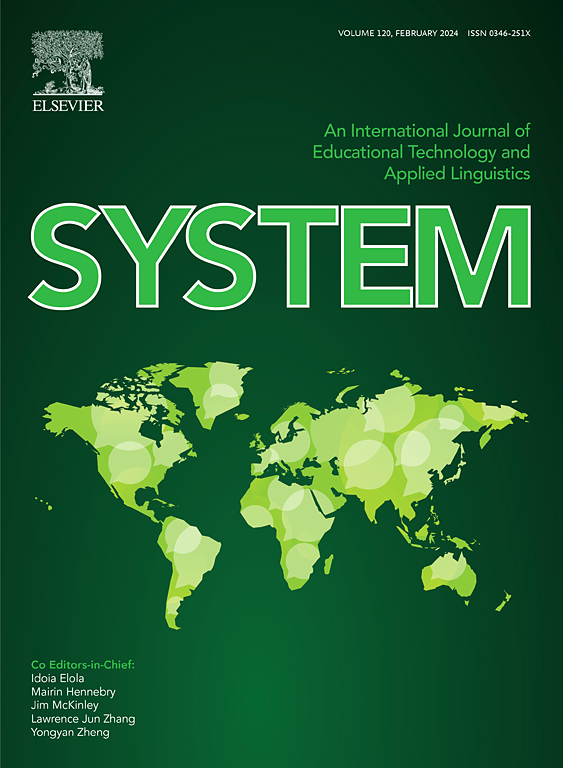汉语关联连接词的二语发展:聚类与错误分析
IF 4.9
1区 文学
Q1 EDUCATION & EDUCATIONAL RESEARCH
引用次数: 0
摘要
本研究通过分析中国第二语言学习者在两项控制任务中的三项测试表现,探讨了汉语相关连接词在第二语言发展中的分类和学习困难。层次聚类分析表明,汉语关联连接词的发展遵循Zipfian分布:频率最高的、语义显著的和典型的连接词最容易习得,而频率较低的、语义复杂的和跨语言发散的连接词则存在显著的学习挑战。错误分析表明,二语学习者普遍缺乏话语能力和对汉语关联连接词搭配用法的充分认识。然而,不同类别的汉语相关连接词存在不同的学习困难,一些连接词更容易受到语际影响,而另一些连接词更容易受到语内干扰。本研究加深了我们对二语汉语连接词发展的影响因素的理解,并为解决这些学习困难提供了教学启示。本文章由计算机程序翻译,如有差异,请以英文原文为准。
L2 development of Chinese correlative connectives: Cluster and error analyses
This study explored the categorization and learning difficulties of Chinese correlative connectives in second language (L2) development by analyzing L2 Chinese learners’ performance on three measures in two controlled tasks. A hierarchical cluster analysis revealed that L2 development of Chinese correlative connectives followed a Zipfian distribution: the most frequent, semantically salient, and prototypical connectives were the easiest to acquire, whereas less frequent, semantically complex, and cross-linguistically divergent connectives presented significant learning challenges. Error analysis indicated that L2 learners generally lacked discourse competence and adequate knowledge about collocational usage of Chinese correlative connectives. However, different categories of Chinese correlative connectives posed distinct learning difficulties, with some connective pairs more vulnerable to interlingual influence and others to intralingual interference. This study deepens our understanding of the factors influencing the L2 development of Chinese connectives and provides pedagogical implications for addressing these learning difficulties.
求助全文
通过发布文献求助,成功后即可免费获取论文全文。
去求助
来源期刊

System
Multiple-
CiteScore
8.80
自引率
8.30%
发文量
202
审稿时长
64 days
期刊介绍:
This international journal is devoted to the applications of educational technology and applied linguistics to problems of foreign language teaching and learning. Attention is paid to all languages and to problems associated with the study and teaching of English as a second or foreign language. The journal serves as a vehicle of expression for colleagues in developing countries. System prefers its contributors to provide articles which have a sound theoretical base with a visible practical application which can be generalized. The review section may take up works of a more theoretical nature to broaden the background.
 求助内容:
求助内容: 应助结果提醒方式:
应助结果提醒方式:


